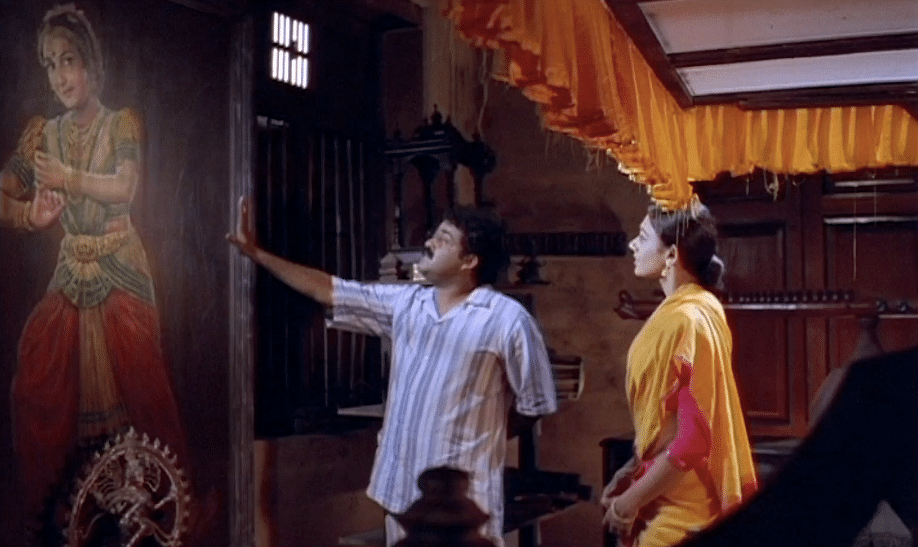
Manichitrathazhu.
It was between 1990 and 2000 when Malayalam movies were at their peak — the films constantly brought new ideas and creative film-making techniques to the table. But they remained popular only among film enthusiasts and arthouse movie lovers.
However, released in 1993, ‘Manichithrathazhu’ also known as ‘The Ornate Lock’ turned heads towards the Malayalam industry. As a testimony to its exceptional entertainment value, it was remade in four languages: Kannada, Bengali, Tamil and Hindi. Still, the original continued to be discussed, analysed and critiqued widely. Some discovered the film and joined discussions on social media as recently as the 2020s.
At the recently concluded Keraleeyam, a week-long celebration by the government of Kerala, the movie was screened along with other popular films. People flocked to the venue to catch the film — about 2,000 people waited in queue for four hours. The organisers had to add additional shows to accommodate fans. 30 years after its release, the film still remains a classic blockbuster. With its captivating narrative and exceptional performances, the film has established its place in the cinematic heritage of India.
Certain themes that were discussed in the movie — that the Malayalam writer Madhu Muttam had surgically placed amidst the narrative — were completely overlooked in the remakes. Ganga’s yearning for intimacy with her husband Nakulan, mental health disorders and why it’s important to turn to science rather than trust conventional modes of treatments, Dr Sunny and Ganga’s passionate friendship — are rare themes in Indian cinema of the period. These themes were not established in the later adaptations in other languages. The emphasis was laid only on the elements of horror and crass comedy.
A relevant example for current day India where the exceptional director Fazil, a Muslim, directed this movie through a powerful portrayal of the Hindu culture of Kerala without making bland oversimplifications or judgements.
‘Manichithrathazhu’ is really the quintessential ‘writer’s film’ that Malayalam movies are known for. Although the film received awards at the 41st National Film Awards, it has remained an underrated gem in Indian cinema.
There was a time in the ’80s and the ’90s when the Malayalam film industry used to stay out of the mainstream Indian film discourse. It stayed esoteric and elusive for most outsiders other than the ones who deliberately attempted to understand the culture and the art. While Tamil and Telugu cinema had collaborations with Bollywood, Malayalam films chose themes better known to Malayalis themselves. They took a route that was different from mainstream Indian films. But in the process, it even made India’s first 3D movie (My Dear Kuttichathan, 1984). With the recent new generation film movement in Malayalam cinema, the industry garnered attention from across the country — where it only received recognition earlier.